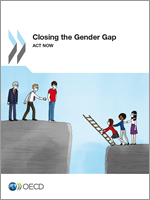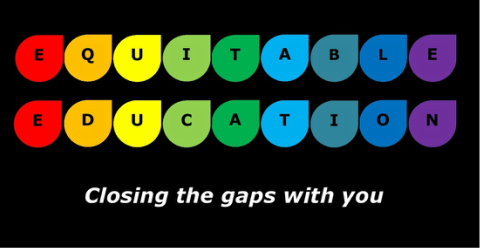“Gender equality is not just about economic empowerment. It is a moral imperative. It is about fairness and equity and includes many political, social and cultural dimensions. It is also a key factor in self-reported well-being and happiness across the world. Many countries worldwide have made significant progress towards gender equality in education in recent decades. Girls today outperform boys in some areas of education and are less likely to drop out of school. But the glass is still only half full: women continue to earn less than men, are less likely to make it to the top of the career ladder, and are more likely to spend their final years in poverty”
The Gender Gap - Act Now, OECD, Dec 2012.

The key findings will no doubt be familiar to many, such as the fact that boys are more likely to drop out of secondary education, which results in young women becoming increasingly better educated than young men in many OECD countries. It has also been well documented that:
- Boys lag behind girls at the end of compulsory education in reading skills, by the equivalent of a year’s schooling on average.
- Boys are also far less likely to spend time in reading for pleasure.
- In contrast, although boys perform better in mathematics, the gender gap is narrower than in reading.
- There remain high disparities in the choice of subject to study, with girls still less likely to choose scientific and technological fields of study,
- Even when girls chose these subjects they are less likely to take up careers in those fields which leaves major implications for the potential career and earning prospects for women in the world of work.
The report argues that a major explanatory factor in these gender disparities is due to differences in attitudes. In order to address these disparities they outline key policy messages for governments to note such as getting “girls more interested in mathematics and science and boys more interested in reading in OECD countries, for example, by removing the gender bias in curricula and raising awareness of the likely consequences of male and female choices of fields of study in their careers and earnings”. They also suggest the use of apprenticeships to encourage women who have completed their science technology and mathematics (STEM) studies to work in scientific fields.
Focusing on the role of educational aspirations which are formed in early life, the report recommends that more attention should be devoted to changing gender stereotypes and attitudes at a young age. It outlines how gender stereotyping takes place in subtle ways at home, in schools, and in society and the messages children and young people form when:
- they have primarily women teachers in primary schools and male science teachers in secondary,
- text books which perpetuate gender stereotypes and
- how teachers themselves can perpetuate their beliefs about girl’s and boy’s abilities in particular subjects.
Although these points relate to what happens at the school, the report recognises the fact that attitudes are also crucially determined by what happens at home. This highlights the important fact that whatever teachers do in school they also have to consider how wider societal and family issues can affect outcomes in schools and any strategy to address these gender disparities should also focus on changing attitudes within the context of what goes on at home.
Due to the nature of this posting I have only focused on a few issues highlighted in the report. For those of you wishing to read the full report it is available here.
“To reap the highest economic and social return on education investment, therefore, it is important to find out just why there are gender differences in attitudes towards reading and mathematics, then to discover ways to reverse the imbalance.”
The Gender Gap - Act Now, OECD, Dec 2012.
The OECD report focused on many issues affecting gender inequalities in education across the world. Moving closer to home the issue of boy’s reading in particular persistently remains an area of priority for most schools in England and the UK. The All Party Parliamentary Literacy Group Boys' Reading Commission working jointly with the National Literacy Trust found that ”three out of four (76%) UK schools are concerned about boys’ underachievement in reading despite no Government strategy to address the issue”.
The commission published a report in July 2012 this year. In it they reveal that the “reading gender gap” is widening and says action needs to be taken in homes, schools and communities. The reading commission report provides a comprehensive overview of the issues, with evidence coming from three sources, including a survey of young people themselves. What will be particularly useful to schools and colleagues interested in closing the gender gaps in reading is that it also provides plenty of practical solutions of how boy’s literacy has been successfully supported by schools, thereby providing those of you wishing to address these issues with practical strategies of “what works” to implement in your own schools or classroom contexts.
Links to the National Literacy Trust page on the Boy’s Reading Commission, which includes the report along with other relevant papers are available here.
Please note that any of the views expressed above are mine alone and not necessarily those of the OECD or The National Literacy Trust. Equitable Education is available to provide specialist consultancy to schools in closing the gender gaps in education.

 RSS Feed
RSS Feed
